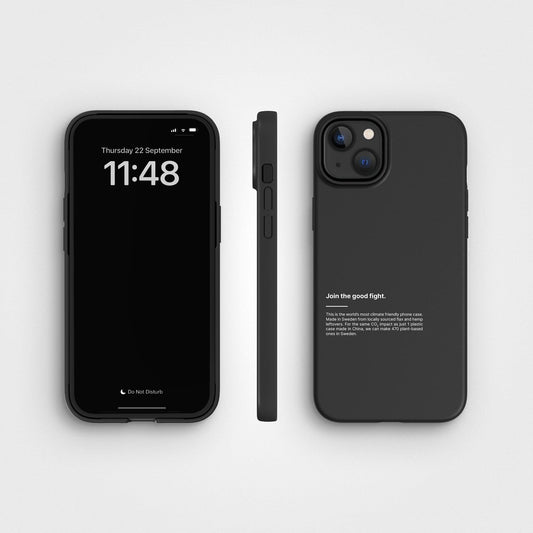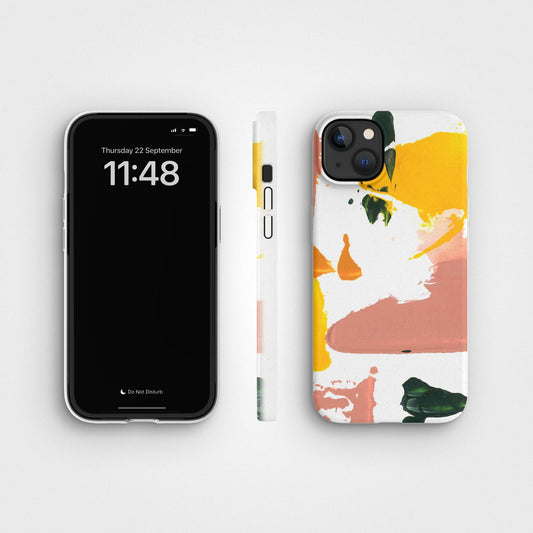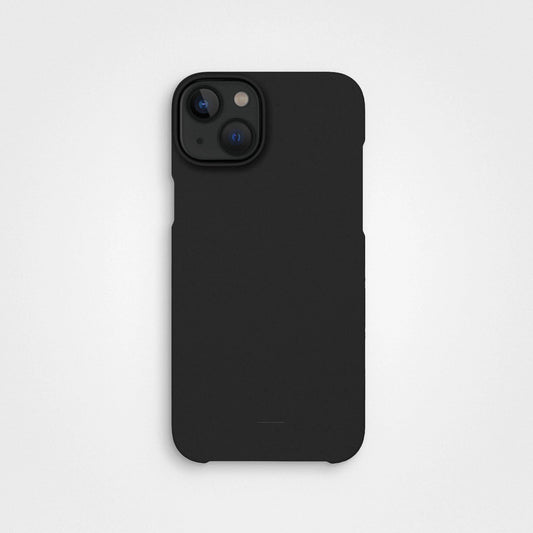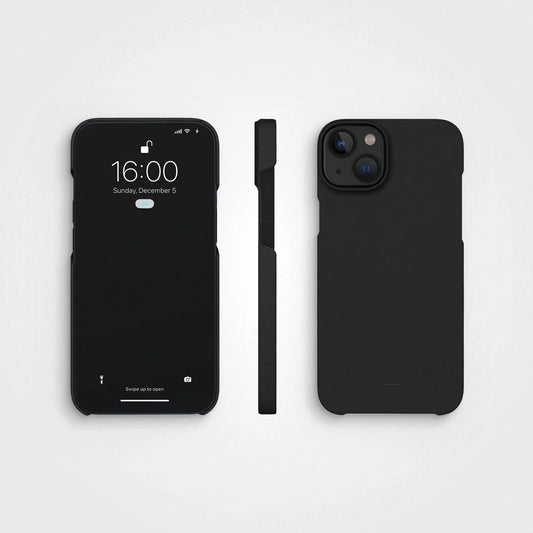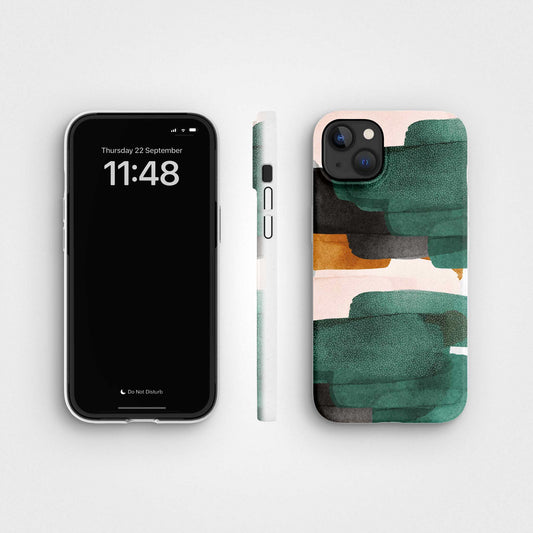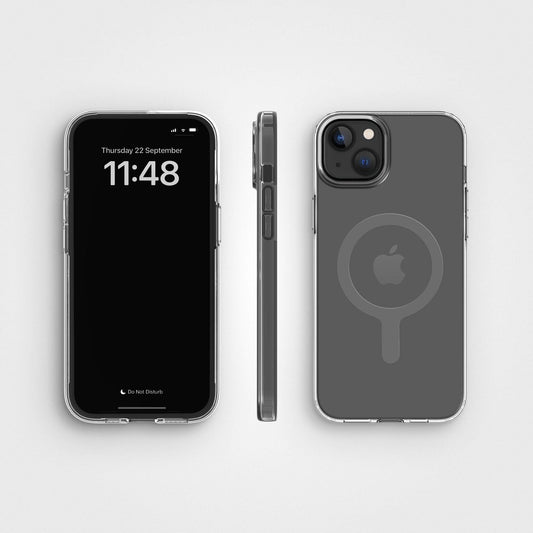470 agood mobilskal ger samma utsläpp som 1 plastskal.
Välj ett växtbaserat mobilskal från agood company.
Om du kommer från våra häpnadsväckande annonser kanske du har sett oss säga att det inte är idealiskt, eller hur?
Vi förväntade oss att några av er skulle ha några frågor.
I dagens värld, full av miljöproblem, där planetmedvetenhet är viktig, har även de till synes små besluten, som att välja ett mobilskal, betydande vikt. Bland flera tillgängliga alternativ har vårt företag tagit en fast ställning till förmån för planeten. Här är ett spännande avslöjande: den förorening som genereras genom att producera bara ett plastskal motsvarar den som genereras genom att tillverka cirka 470 växtbaserade mobilskal. Så när det är dags att välja ditt mobilskal, överväg att välja ett från ett miljömedvetet företag.
Vad är det som inte är idealiskt med andra märken, kanske du undrar? Med tanke på att ett nystartat företag från Sverige kunde göra det, kan vi inte riktigt förstå varför andra företag inte utvecklar miljömedvetna produkter med samma entusiasm som vi.
Det är därför vi har valt att ta upp kampen. Med allt som står mellan oss och passivitet. Vi vill visa världen varför miljövänliga mobilskal är det bästa alternativet. Efter att ha läst detta är vi säkra på att du kommer att ansluta dig till (den goda) kampen mot produkter som inte tar hänsyn till växten så mycket som de skulle kunna.
Vad är agood company mobilskal?
Detta miljövänliga mobilskal, tillverkat i Sverige, väger bara 20 gram och ger ett fallskydd på 2 meter. Tillverkat av en blandning av material som hampa, lin, cellulosa och PLA samt Bio PBAT, har det ett koldioxidutsläpp på 0,102 kg CO2. Fodralet är förpackat i en kartong av återvunnen kartong som är certifierad av FSC och tillverkas i en hållbar fabrik. När det är dags att göra sig av med den kan du returnera den för återvinning genom agood loop™-programmet.
Hjälp oss att göra skillnad: Med ditt stöd strävar vi efter att erbjuda utbildning till 10 000 flickor genom partnerskapet agood company ◣ Malala Fund.
Vi tror att vår vinnande kamp är att 1 plastkasse producerar samma mängd CO2-utsläpp som 470 av våra växtbaserade kassar.
Så hur kom vi fram till den här siffran?
För att kunna genomföra en fullständig livscykelanalys av våra mobilskal var vi tvungna att titta på alla utsläpp under produktionen av våra mobilskal och i slutet av utsläppstiden, tillsammans med våra partners. Vi jämförde sedan detta med produktionen av mobilskal i plast, och eftersom de flesta mobilskal i plast produceras i Kina samlade vi in våra data baserat på detta.
Vi gör naturligtvis inte den här beräkningen själva. Vi anlitade ClimatePartner, en CO2-konsult, som tittade på våra produkter och deras hela livscykel. Låt oss bryta ner dessa siffror och ta en närmare titt.

Vi samarbetade med ClimatePartner för att bedöma koldioxidutsläppen från växtbaserade telefonväskor med hjälp av Greenhouse Gas Protocol Product Life Cycle Accounting and Reporting Standard (GHG Protocol). Studien beaktade utsläpp från råvaruutvinning, förpackning, produktion, leverans till kundens plats och avfallshantering. Fokus låg på kontrollerbara processer, med undantag för utsläpp under produktanvändning.
Data samlades i första hand in och kompletterades med välrenommerade källor vid behov. Utsläppsfaktorer från databaser som ecoinvent och GEMIS användes, med alla växthusgaser konverterade till koldioxidekvivalenter (CO₂e) för tydlighetens skull. Dessutom inkluderades indirekta utsläpp relaterade till produktionen, t.ex. anställdas pendling.

- Vi antog att den plast som används inte är komposterbar och att den produceras med hjälp av fossila bränslen.
- Varje plastkasse väger cirka 21 gram, och därför använde vi detta i våra beräkningar för att få fram det exakta utsläppet för en plastkasse.
- Därefter var det bara en enkel beräkning att räkna ut hur många mobilväskor det skulle krävas för att vi totalt skulle få samma mängd utsläpp som bara EN plastväska.
470
Där har du det, vårt argument för varför vi tar strid med de varumärken som inte visar handlingskraft och för att visa bevis på att hållbar konsumtion kan förändra.
Vill du gräva djupare?
Vi vet att några av er vill veta lite mer om var dessa siffror kommer ifrån, så vi gräver lite djupare i statistiken.
När man tittar på uppgifterna kan man göra ett generellt antagande mellan produktionen i Kina och Sverige. Om vi antar att maskiner och processer är likvärdiga ur ett energiperspektiv (dvs. i Sverige har vi en energieffektiv produktion) och produktionen handlar om hur mycket CO2-utsläpp varje kWh ger upphov till.
1. Låt oss först titta på elmixen.
Det finns korrekt data och statistik som visar att den svenska elmixen ger 13 g CO2 /kWh, medan den kinesiska elmixen är cirka 700 g CO2/kWh. Detta visar att kinesisk plastproduktion släpper ut 50 gånger mer CO2 än svensk produktion.
2. Nästa steg är frakt, det största CO2-utsläppet som plastlådor ger upphov till.
För att samla in dessa uppgifter baserade vi dem på en DHL-resa från Guangdong i Kina till Arlanda i Stockholm. Vi är lite snällare här och tar bara med ungefär hälften av de utsläpp som kommer från flygfrakt. När man jämför detta med våra fraktutsläpp, som är 0, är det en ganska skrämmande skillnad. Vi använder oss av klimatkompenserad frakt, skickar inte produkter med flygfrakt och producerar lokalt i Sverige.
Vår produktionspartner har räknat ut att de förbrukar cirka 4 kWh per bearbetat kg plast i sin fabrik, vilket alltså motsvarar 52 CO2 per kg plast. För en kinesisk fabrik skulle det vara 2,8 CO2 per kg plast. Detta beräknades med hjälp av våra partners energiförbrukningsdata och båda ländernas elmixdata.
3. Nästa sak vi tittade på var hur valet av plast påverkar.
Vilken typ av plast som används har betydelse när det gäller föroreningar. Olika plaster har olika påverkan. Medan vanliga fodral ofta använder plast som inte är bra för planeten, är vi alla för ett grönare alternativ.
Om du tillverkar ett mobilskal med fossil PP (polypropylen) kommer produktionen av materialet att släppa ut 2 kg CO2 / kg plast. Om du producerar med trifilon blir det CO2-neutralt (regenererad/återvunnen plast är också närmare 0). I det här fallet antar vi att plasten som används för de flesta plastskal är fossil PP, därför släpper produktionen av ett mobilskal som produceras med fossil PP ut 0,042 CO2/kg, eftersom varje skal är 21 gram. Ett Good Mobile Case är CO2-neutralt när det produceras, eftersom tillverkningsanläggningen drivs med solenergi på sommaren och växlar till vattenkraft på vintern, samt skapar ett slutet system för avloppsvatten.

Låt oss titta på produktens efterliv, det här är ett av de största argumenten för att plastfodral är långt ifrån idealiska.
Eftersom vi antar att plasten som används är fossilbaserad PP och därför inte kan återvinnas utan istället bränns. Rise har räknat ut att 1 kg plast släpper ut 2 kg CO2 vid förbränning. Om man omvandlar det till vikten av ett fodral (21 gram) blir det 0,042 CO2/kg. Dessutom tar det upp till 500 år för mobilskal tillverkade av blandplast att brytas ned.
Vad som händer med fodralen efter att de har tjänat sitt syfte är mycket viktigt. Användare är ofta osäkra på vad de ska göra med använda mobilskal. Vanliga plastfodral brukar brännas upp eller ta en evighet att bryta ner. Våra mobilskal är däremot 100 % cirkulära, vilket innebär att om du lämnar tillbaka ett använt mobilskal till oss så återvinner vi det till något nytt och det lämnar inga extra föroreningar efter sig.

Välkommen till vårt agood loop-program, här kan du se livscykeln för vårt mobilskal. Ingen deponi, inget avfall och inga utsläpp.
Vi undviker att blanda olika plaster, vilket förenklar återvinningsprocessen för oss när det är dags för en uppgradering av väskan. Alla returnerade väskor samlas in och skickas till vår tillverkningspartner, mobilskal fabrik, som mals till pellets. Dessa pellets kan sömlöst blandas med nya material för att skapa helt nya mobilskal.
Det som verkligen är anmärkningsvärt är att vi kan upprepa denna cykel flera gånger, upp till hela 7 iterationer.

Där har du det.
Vårt resonemang bakom hur vi kan producera 470 mobilskal för samma mängd utsläpp som bara ett mobilskal i plast.
Jag hoppas att alla ni som använder plastväskor tänker att det här inte är så idealiskt, eller hur?


